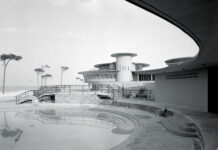
While Mobile is known for Alabama’s first public school — Barton Academy — it was also home to a number of private schools. In the latter half of the 19th century, these schools were mostly run by widowed or single women who had few career choices.
By the first decade of the 20th century, there were parochial and private schools scattered around the city. Mobile actually had two military schools at the time, University Military School (UMS) on Conti Street and Mobile Military Institute on Ann Street, south of Dauphin.
By 1915, UMS was the survivor of the two and was operating on Dauphin Street, east of Ann Street, under its founder, Julius Tutwiler Wright. The goal was to prepare UMS students for college, and the school developed strong ties to private and public Ivy League schools, including the University of Pennsylvania, among others.
Wright had considered creating a similar school for girls and had been approached over the years by parents of his students asking for one. By age 6, his only daughter, Rebecca, had attended a few classes at UMS, but her presence proved awkward.
A major reason for Wright’s delay in founding one was his friendship with his neighbors, three ladies named Knott who had operated a popular girls’ school since the early 1890s. When the sisters told him they were ready to retire, the way was cleared for a female version of UMS.
Girls’ Preparatory School Founded
The former residence of grocer James McPhillips was purchased and remodeled for the new school. The building stood at 1315 Dauphin Street, a block west of Ann Street, and a short walk from the UMS campus. Wright could easily visit both schools throughout the day.
The Girls’ Preparatory School (GPS) opened for business in October 1924 and quickly filled with students. The school required uniforms, since Wright sought to “avoid the extravagant and immodest dress that is so distressingly common.” Rather than dressing like flappers, his students wore navy dresses with stiff white collars and a pair of black bloomers underneath. Wright was pleased with the results, which he said made “for economy, simplicity, democracy and morality.”
The first graduating class of 1925 held their commencement exercises in the recently completed Scottish Rite Temple. The school itself had no space for such an event, and the Temple contained the city’s largest auditorium at the time.
A Sad Ending
Girls’ Preparatory School would probably have enjoyed a long run, but between the stock market crash of 1929 and the untimely death of its 60-year-old founder in 1931, the institution closed its doors soon after.
The students from UMS moved into the building, and their former location was bought by an expanding Dauphin Way Baptist Church. The military school would occupy the space until their 1953 move to Mobile Street, and the newly formed Julius T. Wright School for Girls took over 1315 Dauphin Street. It had come full circle.
The school was named to honor the much beloved founder of UMS and GPS and was an immediate success. By 1972, Wright’s had outgrown McPhillips’ former home and moved into expanded facilities on University Boulevard. In 1989, the two schools merged onto the UMS campus and became UMS-Wright.
The house at 1315 Dauphin Street was purchased by Dauphin Way Baptist Church, which announced plans to convert it into a Bible teaching complex. Those plans never came about and the forlorn structure was demolished. Today, the site is part of the playing fields used by the students at the Alabama School of Math and Science.





